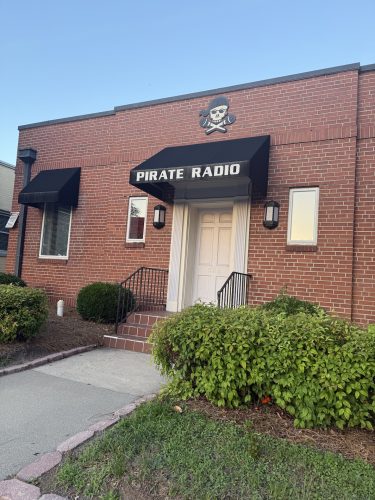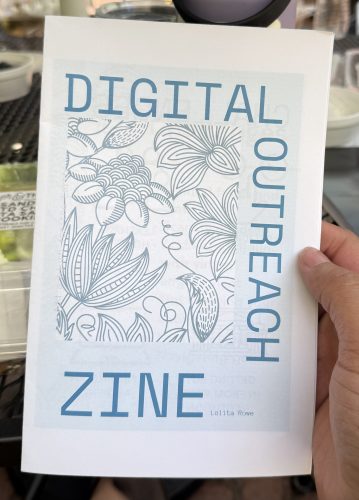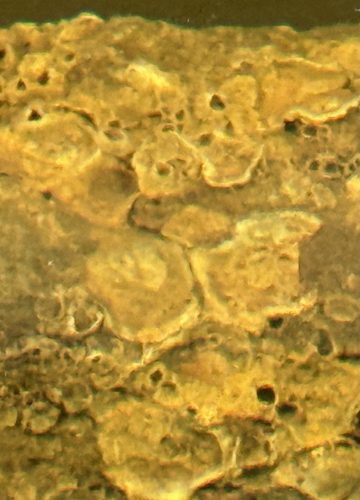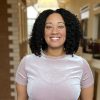I recently attended the 41st Annual meeting of the Society of North Carolina Archivists hosted at East Carolina University. This year’s conference theme, “Outreach and Engagement in a Digital World”, supported interesting presentations that highlighted ways for attendees to navigate professional engagement by incorporating technology into outreach, networking, and access.

The conference commenced with an opening keynote delivered by Ensley Guffey who has been serving as the archivist for the Catawba Nation Archives in Rock Hill, SC, since 2020. I learned that the Bureau of Indian Affairs (BIA) does not provide funding or support for cultural centers or related activities. Consequently, the Catawba Nation Archives and similar institutions have been significantly impacted by the recent budget cuts that interrupted funding received primarily through Institute of Museum and Library Services (IMLS) grants. Guffey’s collections work has been focused on enhancing the collection and preservation environment at the Catawba Cultural Center. He has been working on identifying collection gaps and developing digital records to support stewardship. Additionally, he has been involved in initiatives to decolonize the collections and challenging misrepresentation of indigenous communities.

On the more technical side, Guffey described the process of developing controlled layered access for digitized records in collaboration with the Catawba community, which helps restrict certain cultural information to authorized users. At the Catawba Nation archives, the organization uses Access to Memory (AtoM) and Max Archives’ digitization services to establish an effective content management system for its digital records. The Catawba Nation archives utilizes UNC-Chapel Hill for offsite storage, especially for sensitive materials like human remains. Through the partnership with UNC-CH, Guffey has also been able to explore photogrammetry, a process that involves taking multiple images and measurements, to create 3D models of cultural artifacts. Guffey’s keynote was interesting and optimistic as he informed attendees how we can all continue to do the work we are doing staying updated on ways to decolonize our collections and work with community groups
The first session that I attended focused on user engagement in digital spaces. The first presentation, “From Vaults to Feeds: Social Media Strategies for Special Collections”, was led by Emily Murray. Murray is the Archives Coordinator at Florida Gulf Coast University. Key insights included how to approach social media management for archives through tasks like identifying appropriate content to post across different platforms for effectiveness. It was refreshing to hear other approaches, especially when trying to consider creative ways to not only showcase archival collections but encourage user interactions in online spaces. Other presentations included using a design thinking approach to create a video toolkit for community archives. Amy Archimbault from Western Carolina University shared her workflow for creating instructional and informational videos for the LGBTQ Religious Archive Network. The goal of the videos is to help administrators of LGBTQ community organizations manage and prepare their organization records for archival donation. I found Archimbault’s presentation very interesting because it highlighted archiving as a service. ( Website: LGBTQ Archiving Toolkit)
Other sessions of note included an interesting panel from Campbell University librarians who used a Challenging the Status Quo Grant to fund a contest called “Belonging is Primary: Building Stories of Belonging from CU Archival Primary Sources”. The grant awarded a prize for the best student creative work utilizing archival sources. This was a very interesting presentation that highlighted a creative way to incentivize students to use university archives. Lolita Rowe (UNC-CH) presented to session attendees about exploring collections and connections for opportunities to form strategic collaborations. Rowe created a zine that outlined spaces and platforms for that could be utilized as potential learning places. Rowe’s other projects include creating a podcast while working at Emory before her appointment at Chapel Hill, and several student and alumni focused oral history projects.
On the second day I attended a workshop for lesson plan creation for non-teachers. Facilitators lead interactive activities to provide guidance on making short archival instruction sessions engaging and interesting for students.

After my workshop, I went on a repository tour of the Queen Anne’s Revenge Conservation Lab. Unfortunately, I cannot share the pics that I took, but it was a very fun and interesting learning experience that I recommend if you have the opportunity to visit. During the tour I learned that the conservation lab is the designated space for marine archaeology research and preservation work for materials found in North Carolina. There were canons and an anchor among other artifacts found on the ship. There were also spoons, lead shot, bullet molds, a grenade, pipe stems, shards of glass, and broken porcelain. After spending hundreds of years in salt water, submerged artifacts become “concretions”, encrusted by sediment and other things. The process of breaking down the sediment can take several years and multiple artifacts can be found within one concretion. I worked with similar artifacts while interning as an archaeology lab assistant during undergrad. The materials were excavated at a slave port in the Gambia region of West Africa. Prior to becoming the Queen Anne’s Revenge, the ship operated as a privateer called La Concorde. It was a poignant full-circle moment!

7 Comments on ‘Ashelee at SNCA’
Ashelee, what an excellent conference! Ensley Guffey’s keynote on the Catawba Nation Archives sounds fascinating and so engaging! And the session on social media strategies and the others you mention sound so informative! I appreciated the toolkit link as well and checked it out! Thanks for posting!
Thank you for sharing, Ashelee. It sounds like it was a wonderful conference. Also, the Queen Anne’s Revenge Conservation Lab sounds like a really interesting place. Thank you for recommending it!
Sounds like a very good conference, I’m sorry I missed it this year. Thanks for sharing!
Wow, sounds like an amazing conference experience. Thank you for sharing, Ashelee! I also hope you got the opportunity to chat with Lolita Rowe after her session. One of my favorite people!
Thanks, Ashelee, for sharing about these sessions—SNCA always hosts great programs. I already know I want to learn more!
Ashelee, what a comprehensive and fascinating summary you give. I am intrigued by the creativity utilized to capture and preserve the underserved Catawba Nation archives. Thanks.
There were lots of cool things in this report… a ZINE! very cool. I remember Amy Archambault from her time in ZSR (she attended my book repair workshop in Raleigh in March). I’d love to see the archaeology lab at ECU! Sounds fantastic.